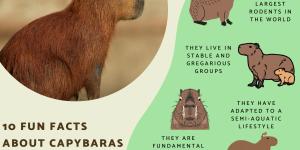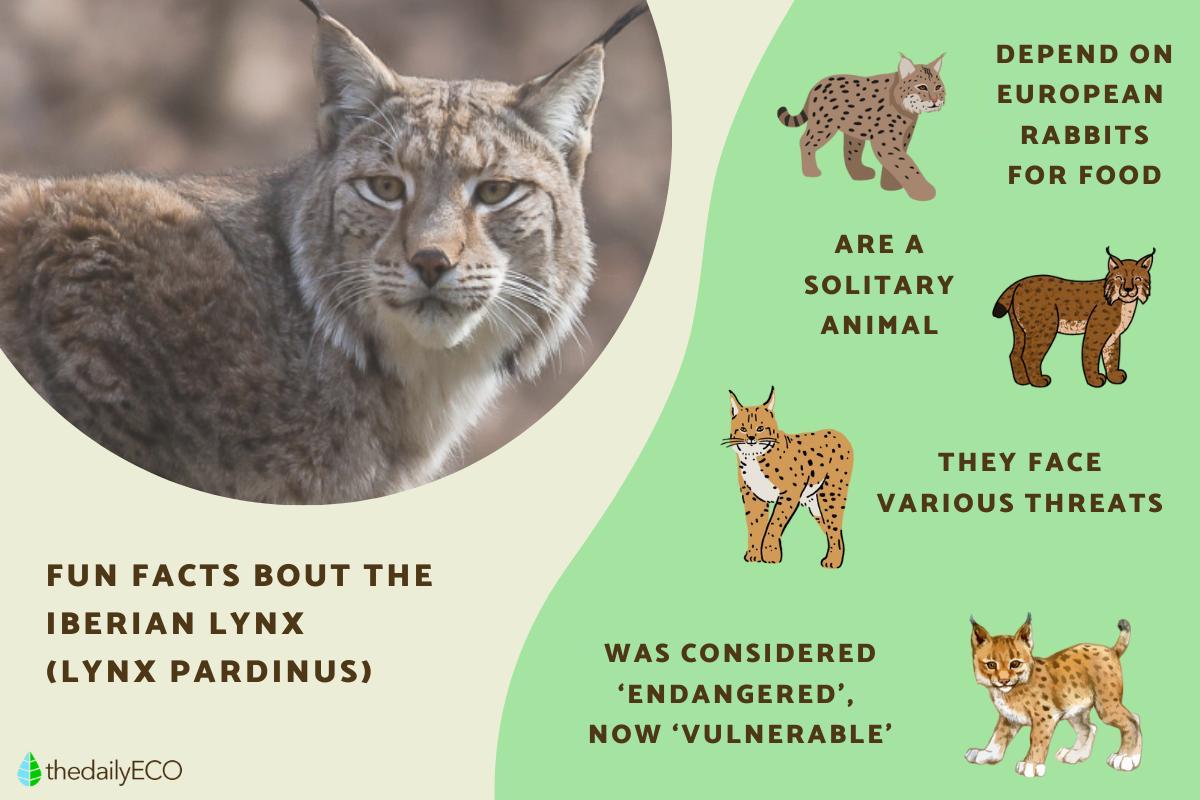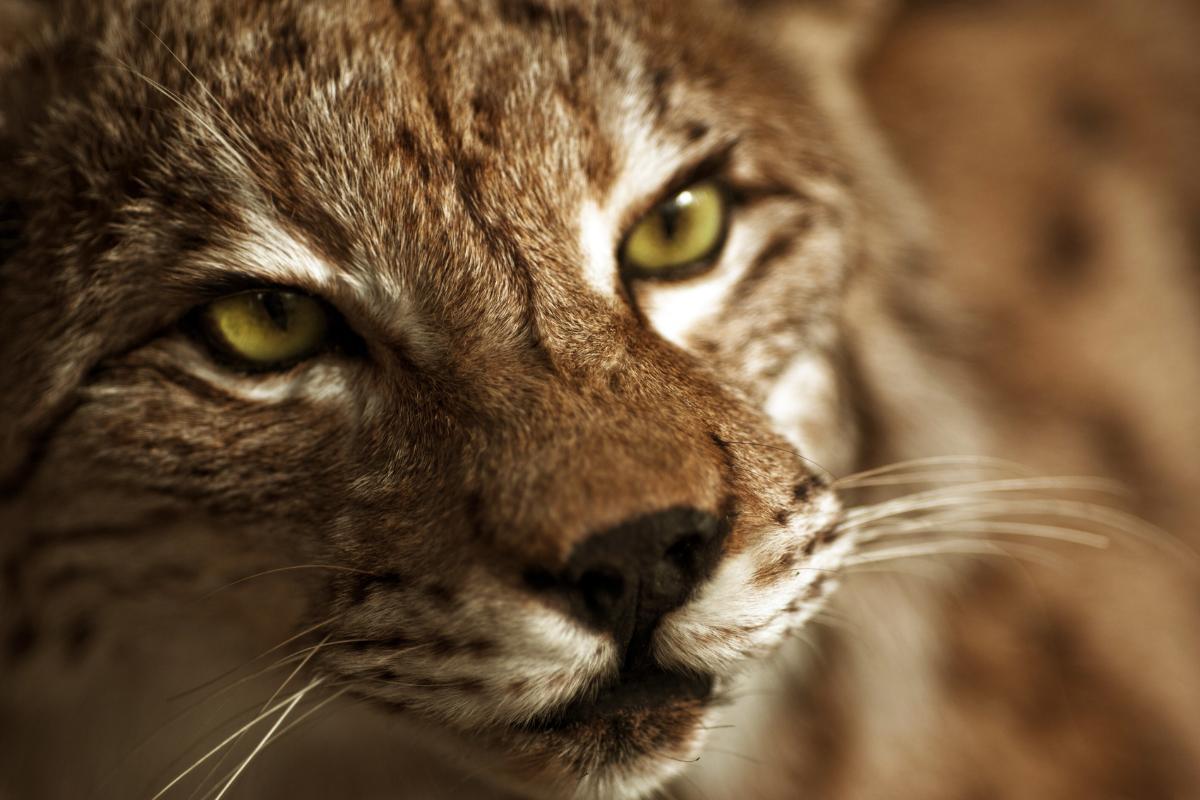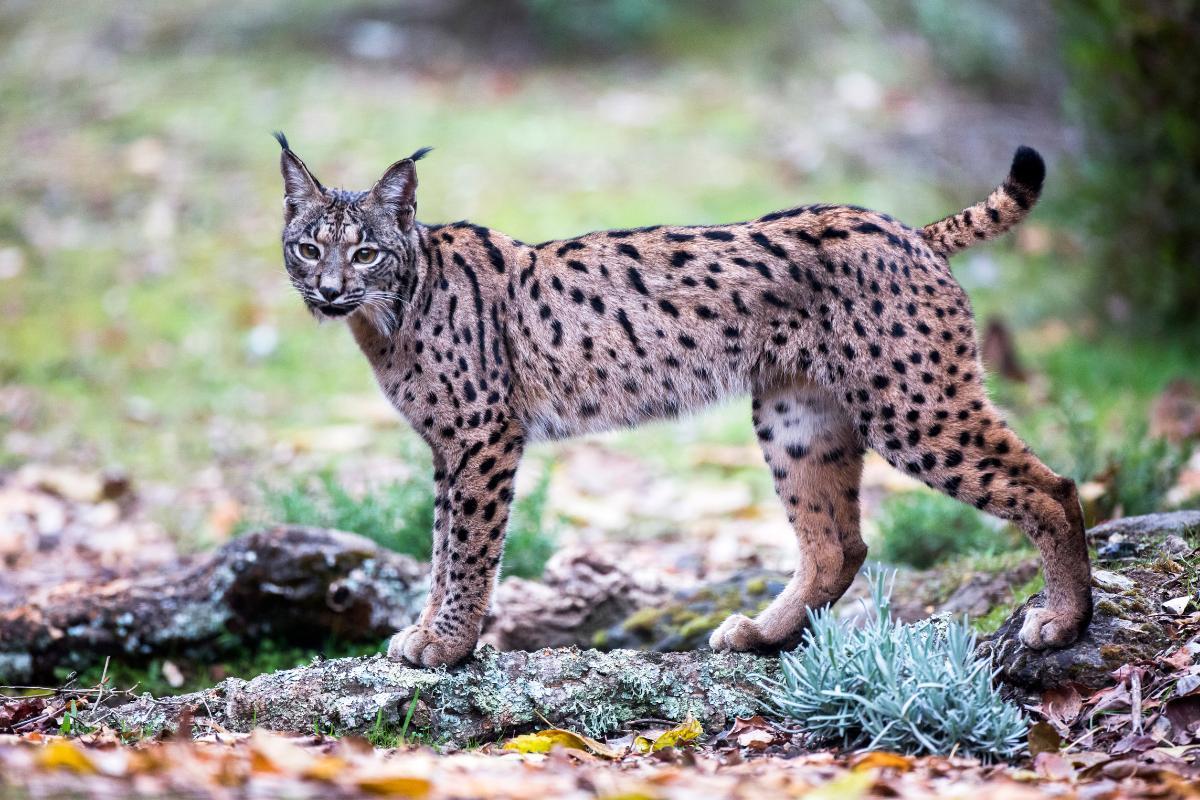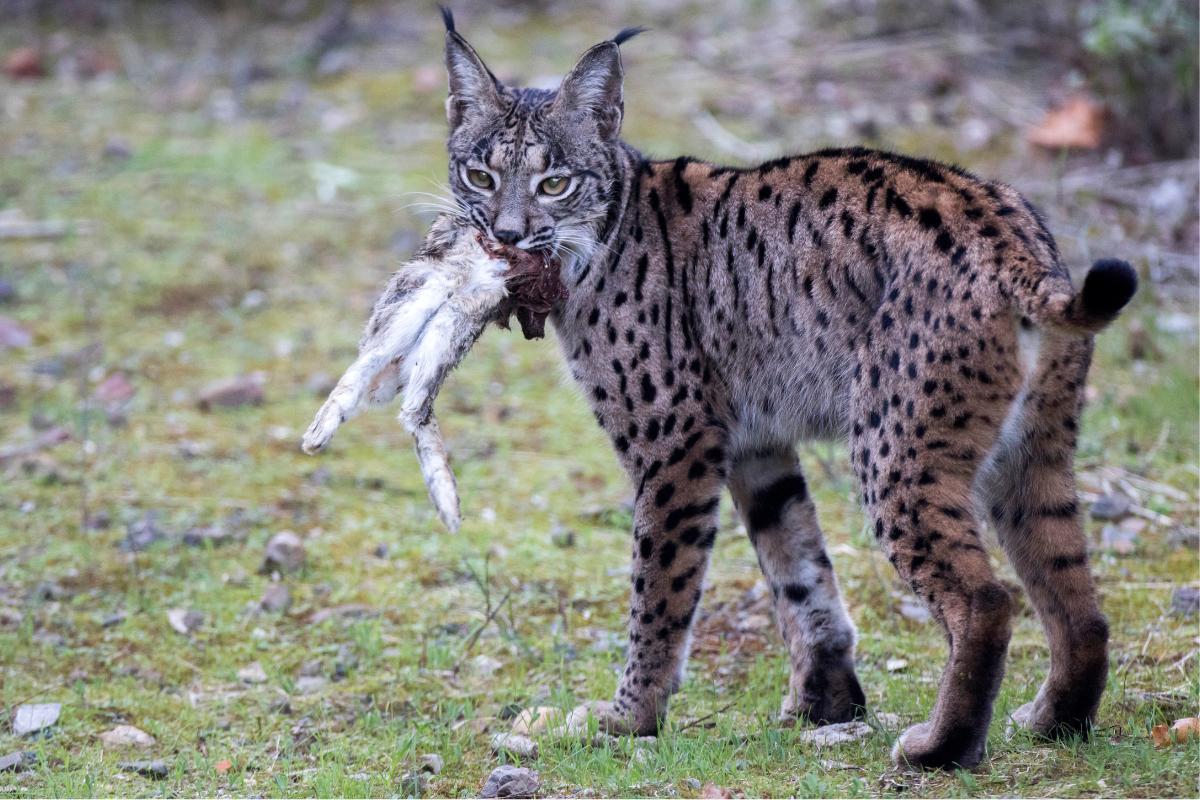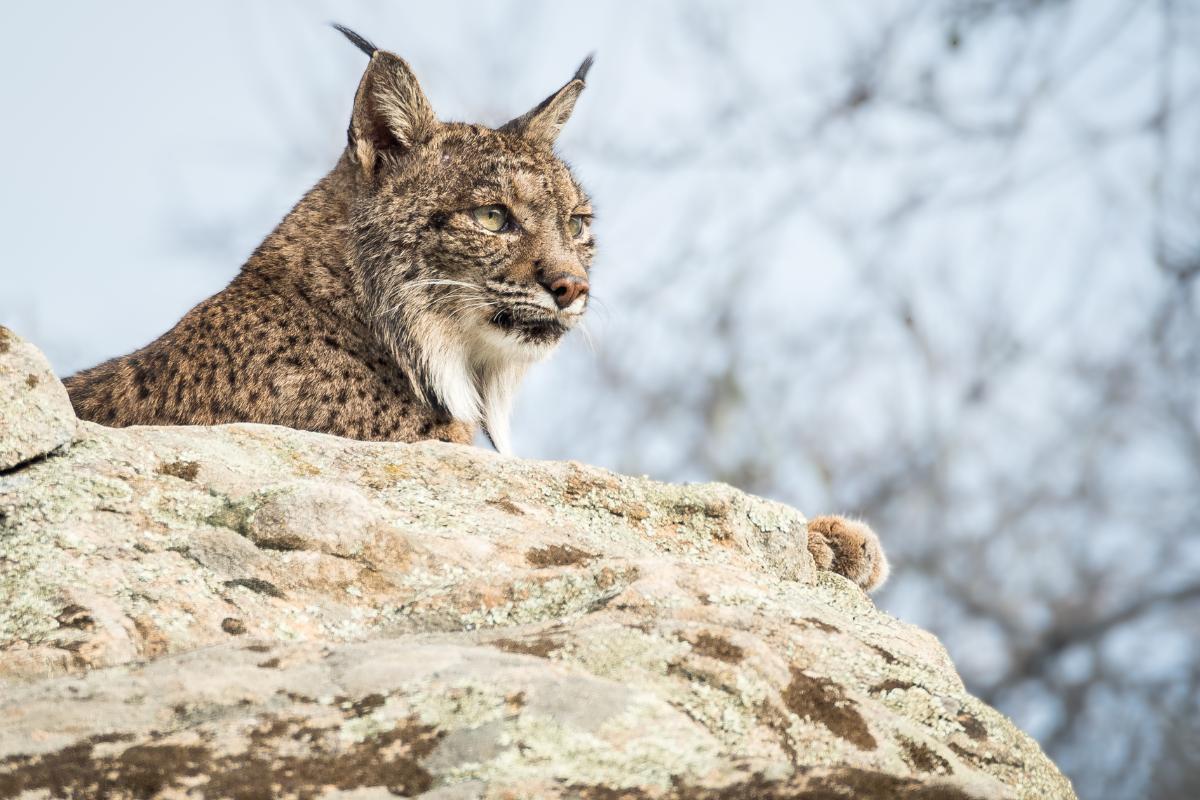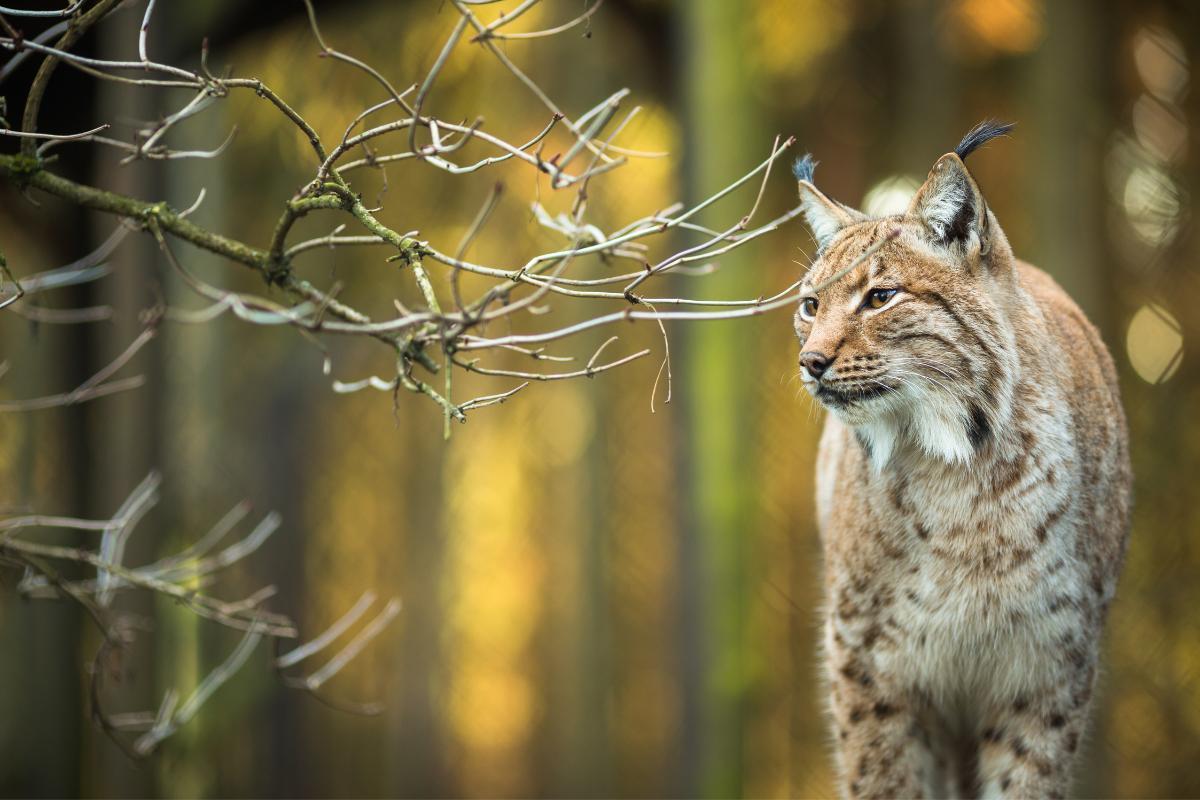Iberian Lynx Facts


The Iberian lynx (Lynx pardinus) is one of four extant lynx species from the genus Lynx. Native to the Iberian Peninsula of Spain and Portugal, the Iberian lynx is one of the few apex predators left in the region. While numbers have been decimated over the years for various reasons, there in an encouraging trend which has seen populations recover in recent years. This has led to the Iberian lynx being reclassified from ‘Endangered’ to ‘Vulnerable’ according to the IUCN Red List. This doesn't mean this big cat does not still face challenges. Learn about these challenges and how they are met with our thedailyECO list of 10 Iberian lynx facts.
- It belongs to the Lynx genus
- It is the treasure of Spain
- It depends on rabbits for food
- It is a solitary animal
- It is a master of its territory
- It lives in a dangerous environment
- There is a ray of hope for the Iberian lynx
- It has other threats
- The Iberian lynx went from being classified as 'Endangered' to 'Vulnerable'
- Genetic resource banks are a way to conserve the Iberian lynx
It belongs to the Lynx genus
We start our fun Iberian lynx facts by looking at their taxonomy. The scientific name for the lynx genus is Lynx, derived from a Greek word meaning ‘to shine’. This is in reference to their reflective eyes. There are 4 extant species of lynx which are:
- Iberian lynx (Lynx pardinus)
- Eurasian lynx (Lynx lynx)
- Canada lynx (Lynx canadensis)
- Bobcat (Lynx rufus)
While the bobcat, Canada lynx and Eurasian lynx are all classified as being of ‘Least concern’ in terms of classification, the Iberian lynx was previously listed as ‘Endangered’. While they are the rarest type of lynx in the wild, there are reports of population numbers recovering. This has led to them now being considered ‘Vulnerable’.
Learn more about the different types of lynx cat with our related guide.
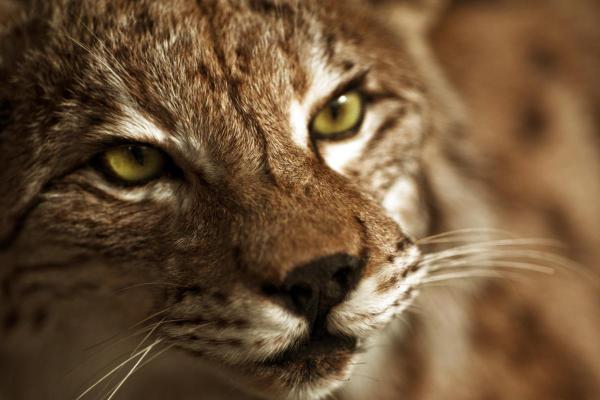
It is the treasure of Spain
The Iberian lynx is an emblematic big cat species that lives in the Mediterranean scrublands, oak forests and grasslands of the Iberian Peninsula. Its presence is mainly concentrated in southern Spain, where it is most likely to find shelter and food. Conservation efforts are crucial to restore and improve these habitats, which are vital for the survival of the species.
Currently, the Iberian lynx is found in two isolated wild populations, something which increases its vulnerability. Its total population is beginning to recover, but this does not mean that it is no longer in danger.
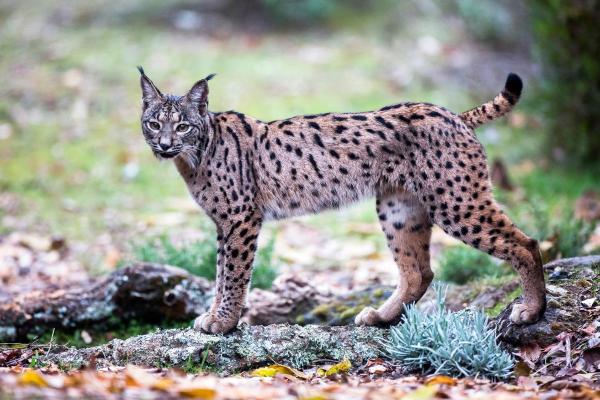
It depends on rabbits for food
Our next fun Iberian lynx fcts concern diet. The Iberian lynx is noted for being an expert hunter, with the European rabbit (Oryctolagus cuniculus) as its main food source. This lagomorph represents more than 80% of its diet. Although it also consumes deer, partridges and small mammals from time to time, its survival is closely linked to the health of rabbit populations. Epidemics that have affected these smaller animals have put the lynx at risk, highlighting the urgent need to restore its habitats and improve prey availability.
Discover the difference between rabbits and hares with our related guide.

It is a solitary animal
Iberian lynxes are solitary animals that establish and defend their territory with great ferocity. They create dens in strategic places such as fallen trees to offer protection from the elements. During the mating season, females choose a single male, generating competition between males in the process. After a gestation period of approximately two months, females give birth to one to four cubs, which the females raise alone.
Young Iberian lynxes become independent at around ten months, seeking their own territory, while their role as apex predators is crucial to maintaining the balance of their ecosystem.
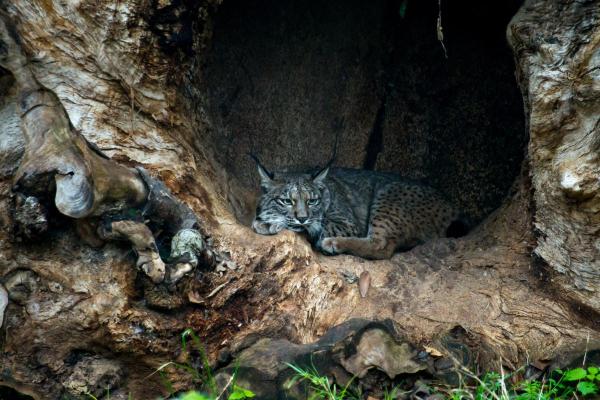
It is a master of its territory
The Iberian lynx displays a variable activity pattern, with greatest activity being carried out at dusk. Young lynx disperse from their birthing area, settling an average distance of 10 Mi (16 km), although some can travel as far as 27 Mi (43 km). Each lynx marks its territory, using feces and urine at strategic points, such as trail crossings and watering holes. Males have larger territories than females and tend to avoid overlapping with other males, ensuring their dominance in the ecosystem as they do so.
It lives in a dangerous environment
Due to various threats, the Iberian lynx population has been threatened over the years. These risks include disease outbreaks. A study revealed the presence of several infectious and parasitic agents, such as fleas, ticks and lice[1]. Other infectious agents such as Mycobacterium bovis and Leptospira interrogans are also known to affect both lynxes and other species in their habitats in Sierra Morena and Doñana. The data indicate that lynxes have little direct contact with these pathogens, but the abundance of carnivores such as cats and dogs serves as a reservoir, increasing the vulnerability of the lynx.
There is a ray of hope for the Iberian lynx
In 2021, the Iberian lynx population reached approximately 1,111 individuals, a notable increase from the 100 remaining in the early 2000s. Most lynxes are concentrated in two isolated populations in southern Spain, with some smaller populations in Portugal. Although conservation efforts have shown positive results, it is crucial to maintain and intensify these initiatives to ensure the survival and recovery of the Iberian lynx.
Some of the different types of wolves are endangered, especially those present in the Iberian Peninsula.

It has other threats
The decline in the rabbit population as its main source of food has negatively impacted the Iberian lynx. Epidemics such as myxomatosis have drastically reduced rabbit populations, leading to calls by Spanish authorities to intensify conservation efforts. In addition, the construction of roads and highways has fragmented the lynx habitat, causing these felids to die in road accidents. Although prohibited, illegal hunting remains a threat. This can happen accidentally when lynxes are caught in traps intended for other species.
The Iberian lynx went from being classified as 'Endangered' to 'Vulnerable'
As stated in this article, the Iberian lynx has moved from being classified as ‘Endangered’ to ‘Vulnerable’ on the IUCN Red List, thanks to sustained conservation efforts[2]. Its population has grown from just 62 individuals counted in 2001 to 648 in 2022, with an estimated over 2,000 Iberian lynxes in total. Initiatives have included habitat restoration and increasing the rabbit population, crucial for their food. In addition, over 400 lynxes have been reintroduced to the Iberian Peninsula, expanding their area of occupancy to 3,320 km².

Genetic resource banks are a way to conserve the Iberian lynx
Genetic resource banks are essential for the management of endangered species. They are repositories of biological materials that store genetic information to support conservation efforts for endangered species, helping to prevent inbreeding and loss of genetic variability.
A study of Iberian lynxes shows that it is possible to conserve living tissues and cells from biopsies and necropsies[3]. This not only allows maximizing the reproductive opportunities of lynxes, but also offers the possibility of using biomaterials from deceased individuals in future studies and reproductive biotechnologies. In turn, this benefits in strengthening conservation efforts.
Discover more fun facts about other types of felid with our article sharing the different types of tigers.
If you want to read similar articles to Iberian Lynx Facts, we recommend you visit our Facts about animals category.
1. Millán, J., Ruiz-Fons, F., Márquez, F. J., Viota, M., López-Bao, J. V., & Paz Martín-Mateo, M. (2007). Ectoparasites of the endangered Iberian lynx Lynx pardinus and sympatric wild and domestic carnivores in Spain. Medical and veterinary entomology, 21(3), 248–254. https://doi.org/10.1111/j.1365-2915.2007.00696.x
2. IUCN. (2024). Iberian lynx recovering thanks to conservation measures - IUCN Red List. Press release. https://iucn.org/en/press-release/202406/iberian-lynx-recovering-thanks-to-conservation-measures-red-list
3. Leon-Quinto, T., Simon, M. A., Cadenas, R., Jones, J., Martinez-Hernandez, F. J., Moreno, J. M., Vargas, A., Martinez, F., & Soria, B. (2009). Developing biological resource banks as a supporting tool for wildlife reproduction and conservation The Iberian lynx bank as a model for other endangered species. Animal reproduction science, 112(3-4), 347–361.
https://doi.org/10.1016/j.anireprosci.2008.05.070
- Calzada, J., Guzmán, J., & Rodriguez, A. (2007). Lynx pardinus (Temminck, 1827). Atlas and Red Book of Terrestrial Mammals of Spain. https://www.miteco.gob.es/content/dam/miteco/es/biodiversidad/temas/inventarios-nacionales/ieet_mami_lynx_pardinus_tcm30-99818.pdf
- WWF. (n.d.). Once regarded both as an attractive hunting trophy and as a vermin. https://wwf.panda.org/discover/our_focus/wildlife_practice/profiles/mammals/iberian_lynx/ibelynx_threats/


